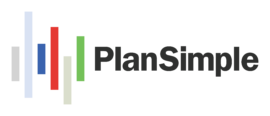As a plan administrator or sponsor, you want to provide your employees with a retirement plan that benefits them while also being beneficial to your company. Safe harbor plans have become a popular option, but some sponsors may be hesitant to implement them out of concern for the associated costs. Let’s talk about the true cost of safe harbor plans, focusing on how the elective safe harbor plan design can reduce costs.
What is a Safe Harbor Plan?
Safe harbor plans are designed to help employers satisfy certain IRS requirements, such as nondiscrimination testing, by making contributions to employees’ retirement accounts. Some sponsors may believe that offering a safe harbor plan would require them to contribute a significant amount of money to their employees’ accounts; while a non-elective safe harbor provision may require a contribution of 3% of payroll for all employees whether or not they participate, the elective provision only requires contributions from those who choose to participate.
The Elective Safe Harbor Plan
Under the elective safe harbor plan, a sponsor would provide a matching contribution equal to 100% of the first 3% of compensation deferral and 50% of the next 2% of compensation deferral. The total potential exposure to the plan sponsor is greater than the non-elective scenario, but the reality is that very few, if any, safe harbor plans have 100% of their participants deferring 100% of the maximum into the plan.
Another significant benefit of safe harbor plans is that they allow highly compensated employees (HCEs) to defer the maximum into the plan irrespective of ACP/ADP testing. This means that even if the plan fails the testing, HCEs can still contribute up to the maximum amount allowed by law. Additionally, safe harbor plans help reduce the risk of plan disqualification, audits, and other compliance issues.
Is This the Right Solution for Your Company?
Here are a few scenarios to consider:
- A safe harbor 401(k) plan allows the company to bypass the burden and complexity of non-compliance tests if the company follows the rules above.
- If the company’s plan has failed compliance testing in a prior year, it might be a good candidate for a safe harbor provision.
- If the company’s executives are not able to contribute as much to their retirement plan as they would like, then a safe harbor plan design can help.
- If the company’s business is predictable and consistently profitable, allowing it to make retirement contributions to employees without difficulty.
- If participation from lower-income workers in the company’s 401(k) plan is low, implementing a safe harbor provision can help encourage increased deferrals into the plan.
As with any type of 401(k) plan, there are certain costs associated with safe harbor plans, such as administration and record-keeping fees. But, with careful planning and consideration of the elective safe harbor plan design, the cost of offering a safe harbor plan can be minimized. For example, some providers may offer discounted fees for safe harbor plan administration, or sponsors can opt for auto-enrollment to increase participation rates.
Ultimately, the cost of a safe harbor plan will depend on factors such as employee participation, employer contributions, and administration fees. However, adopting an elective safe harbor design can provide a valuable benefit for employees while also keeping costs manageable for employers.
Have questions about your company’s 401(k) plan options? CLICK HERE to make an appointment.

